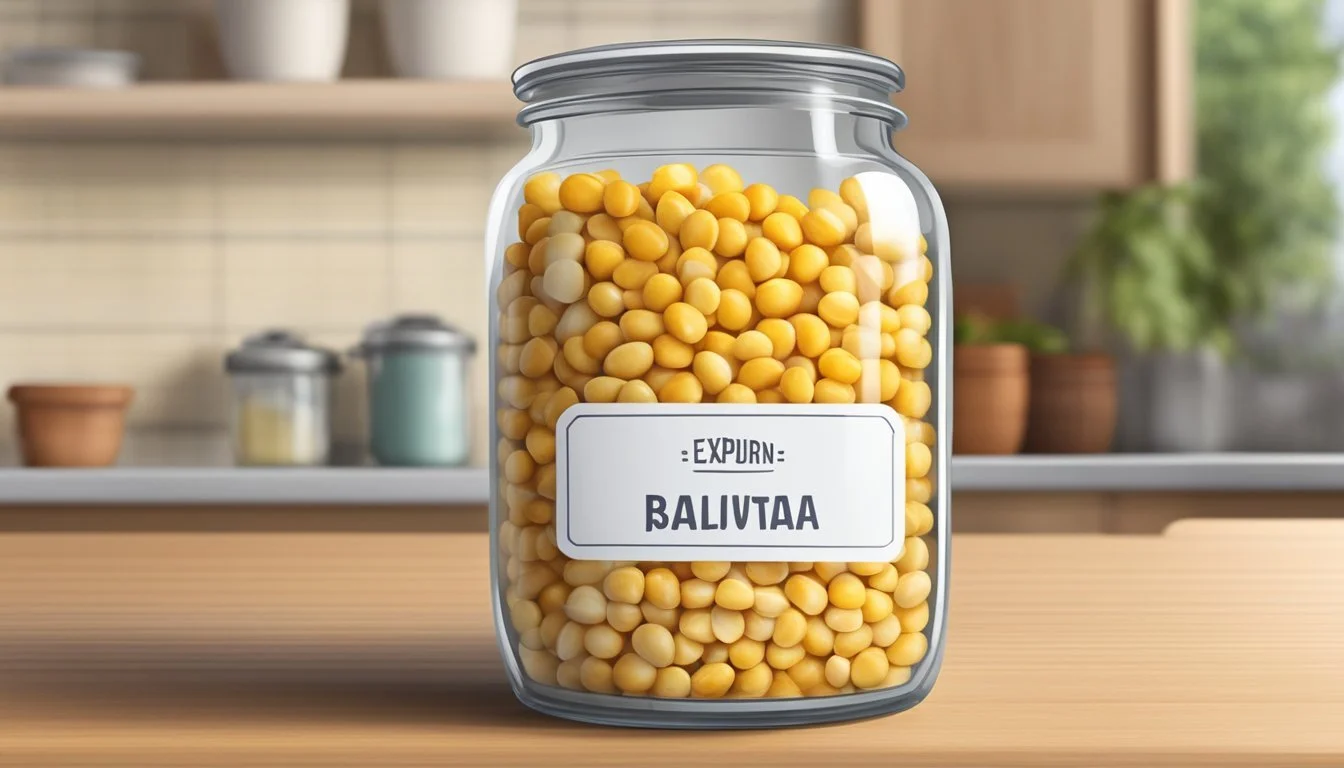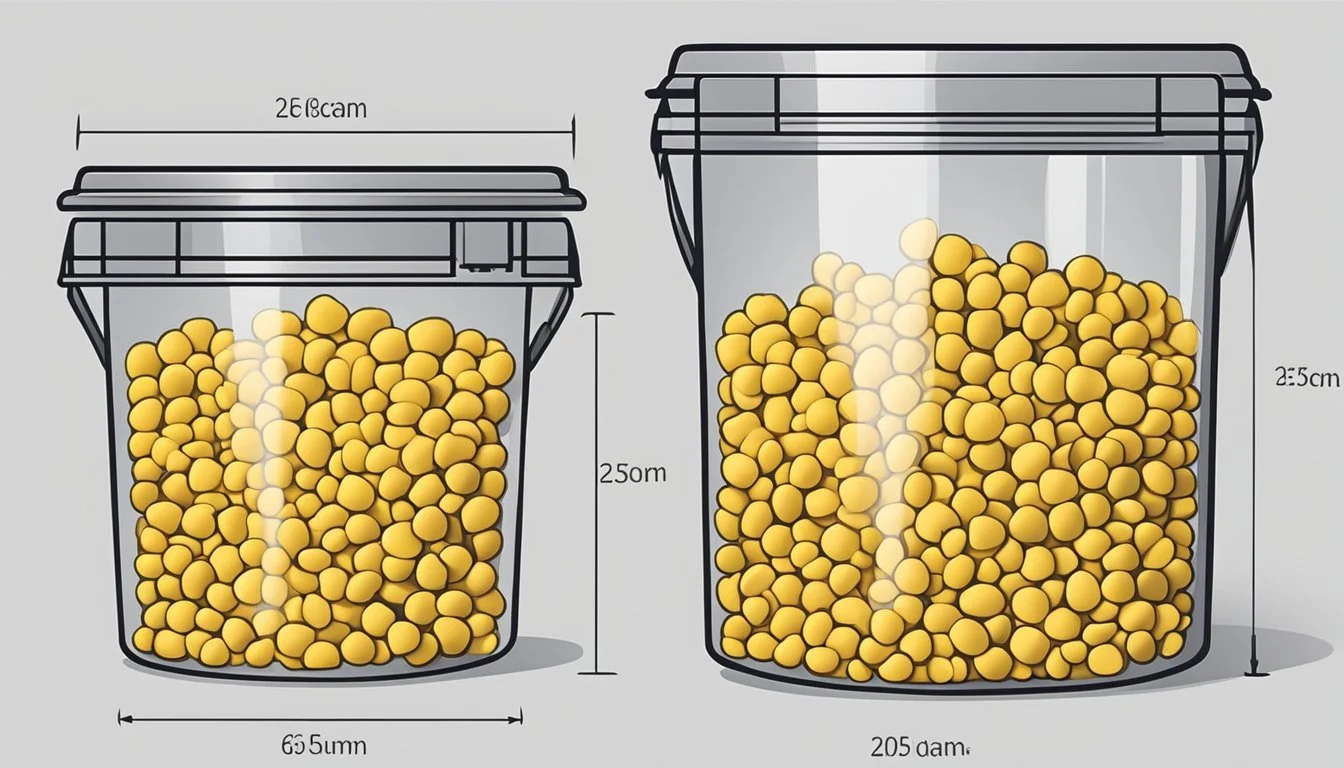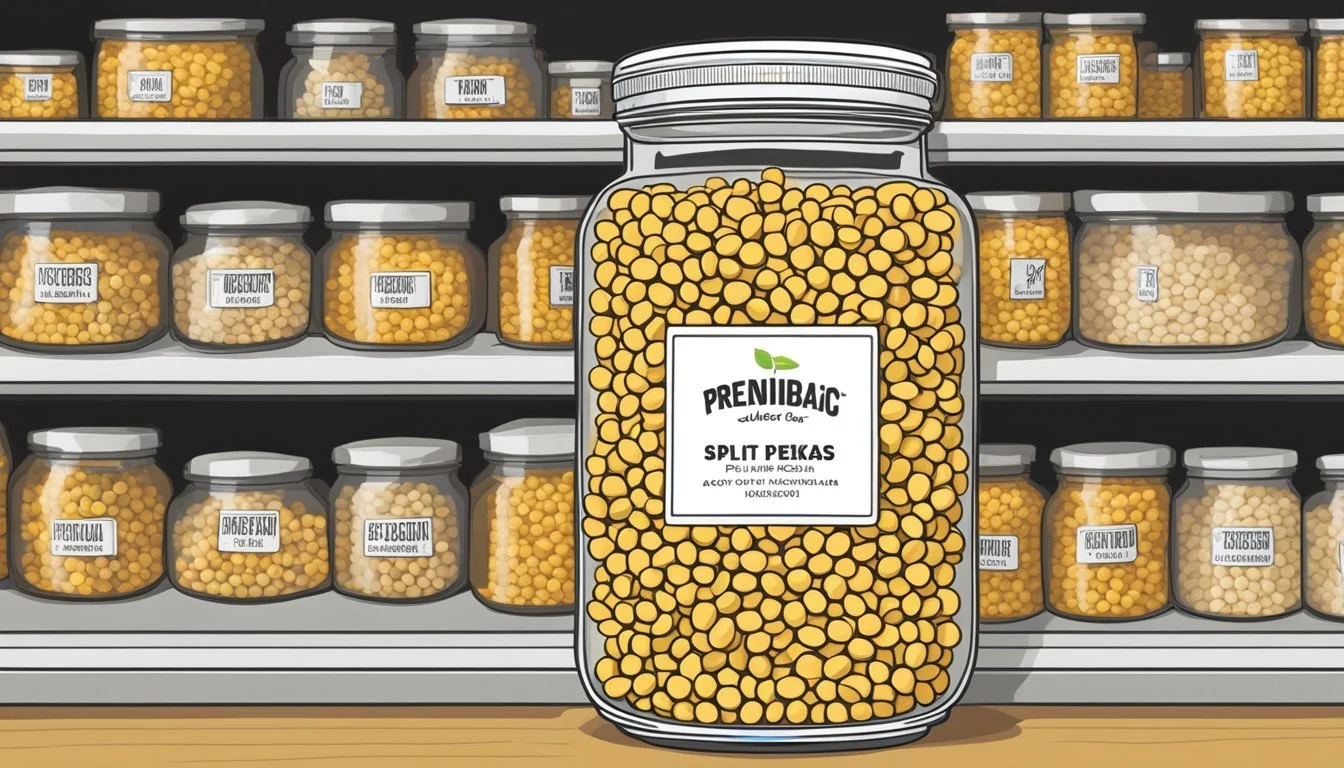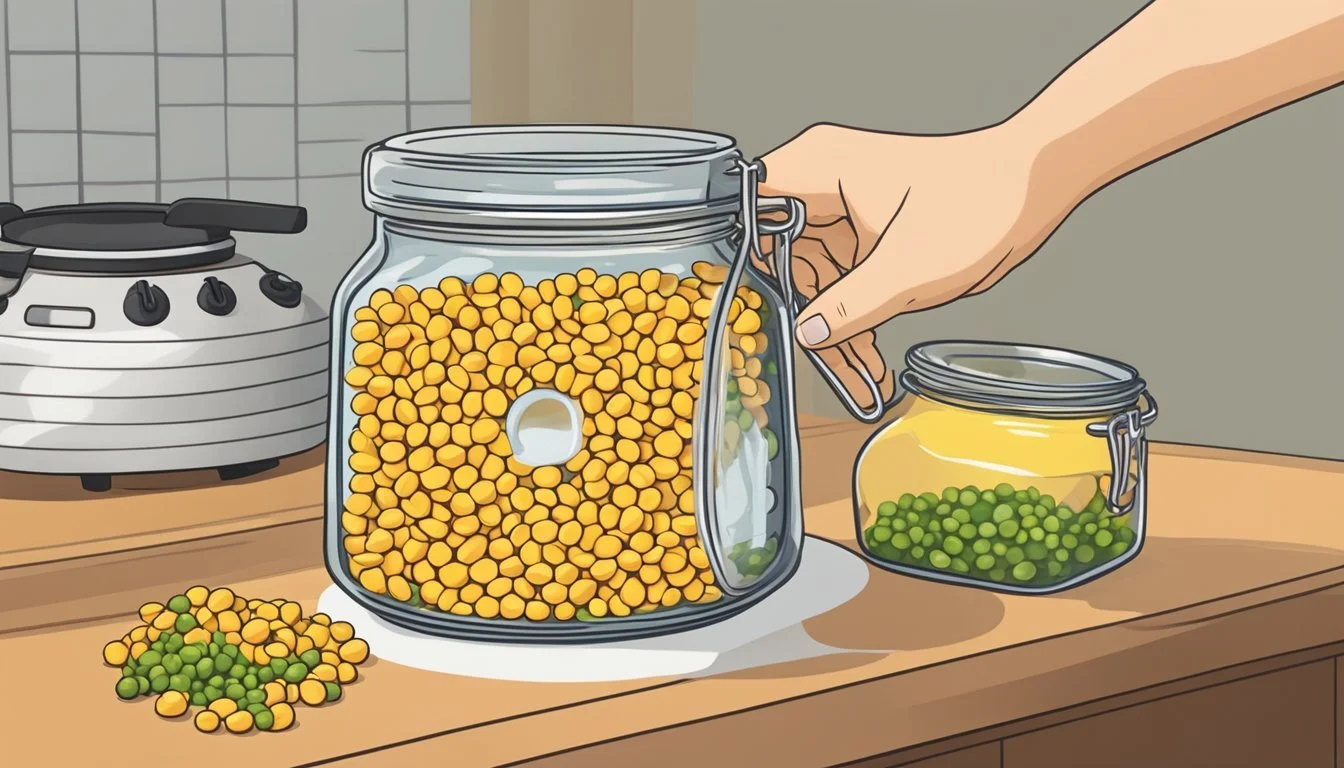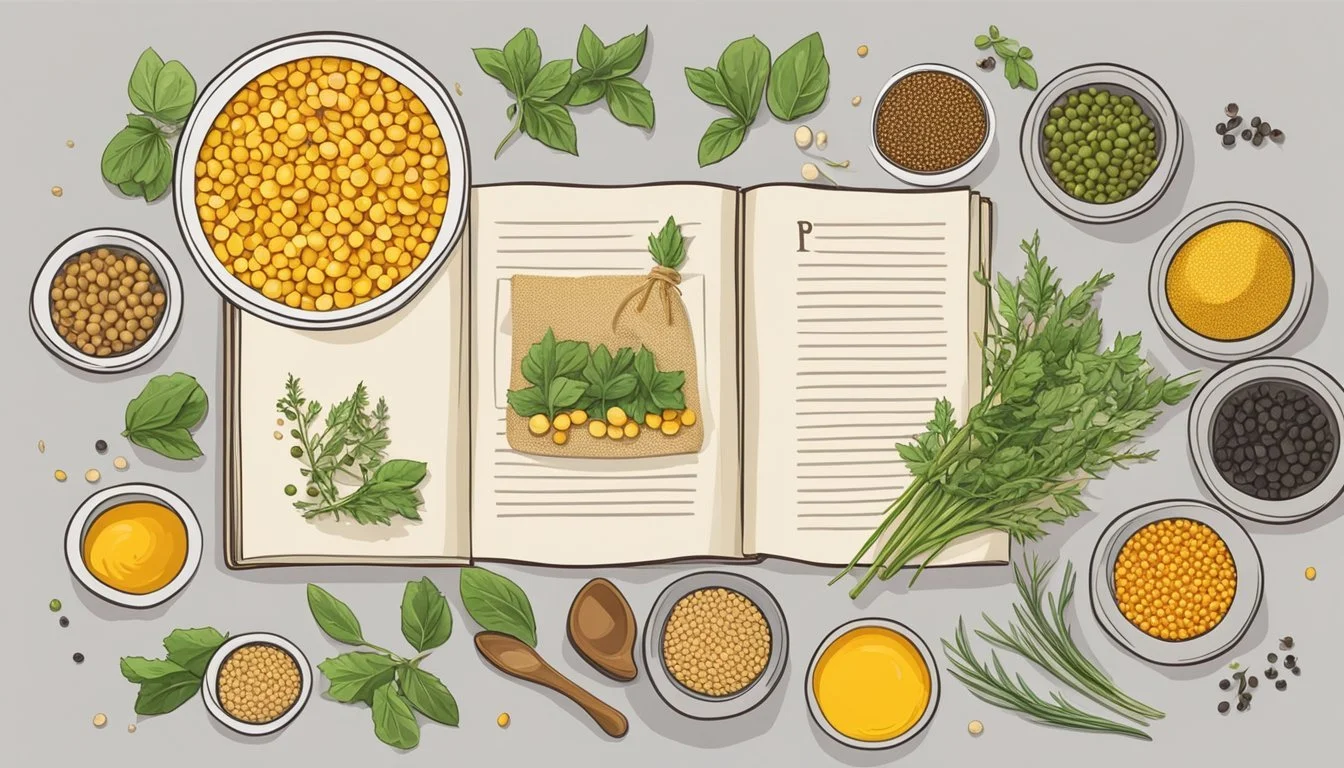How Long Do Yellow Split Peas Last?
Shelf Life and Storage Tips
Yellow split peas are a nutritious staple often found in pantries around the world, prized for their long shelf life and nutritional value. They are a versatile legume that can be stored for extended periods without losing their natural goodness. Packed with protein, fiber, vitamins, and minerals, these peas provide a wholesome addition to any diet. Rich in carbohydrates as well, they offer a stable source of energy, making them a favored ingredient in vegetarian, vegan, and health-conscious meals.
In terms of shelf life, when stored properly in a cool, dry place, yellow split peas can maintain their best quality for years, oftentimes up to three years if kept in their original packaging. The longevity of these peas ensures that they retain not only their flavor but also their dietary benefits, providing essential nutrients such as protein and fiber each time they are prepared. Despite the passing of their best-by date, the peas do not generally lose any nutritional value, though they may require longer soaking and cooking times to achieve the desired softness.
Without compromising their caloric value, yellow split peas remain a reliable ingredient for those looking to maintain a balanced diet. Their indefinite shelf life, under optimal conditions, ensures that they can be enjoyed well beyond the estimated best quality timeframe. Whether it's part of a warming soup or a heartening stew, yellow split peas are an enduring, nutritious element in culinary traditions across the globe.
Understanding Yellow Split Peas
Yellow split peas are a nutritious staple that offer a variety of culinary applications while also boasting a distinctive set of physical characteristics. They are an excellent source of protein and fiber, contain essential vitamins and minerals, and are inherently gluten-free, making them a suitable ingredient for many diets.
Nutritional Profile
Yellow split peas are packed with nutritional benefits. A single 196-gram cup serving of cooked yellow split peas typically includes:
Calories: A moderate amount, contributing to a balanced diet.
Protein: Vital for muscle repair and growth.
Fiber: High levels, which are beneficial for digestive health.
Carbohydrates: Present in a form that supports sustained energy.
Vitamins: A good source of B vitamins, including folate and choline.
Minerals: Contains iron, zinc, and phosphorus, essential for various bodily functions.
Low in Fat: Makes them a heart-healthy choice.
Given their rich composition, yellow split peas are ideal for maintaining a well-rounded diet.
Culinary Uses
Yellow split peas are versatile in the kitchen. They can be boiled until tender and used in a variety of dishes, from soups (What wine goes well with soups?) and stews to dips and spreads. Their mild flavor and creamy texture when cooked make them a popular choice for both savory and sweet concoctions. With the aid of pressure cookers, such as Instant Pots, they can be prepared quickly without the need for pre-soaking.
Physical Characteristics
Physically, yellow split peas are the dried, peeled, and split seeds of Pisum sativum, commonly referred to as peas. Their pale yellow hue and granular shape make them easily distinguishable. When stored properly in a cool, dry place away from direct sunlight, dried yellow split peas will maintain optimal quality for about a year, although their vitamin content can degrade over time.
Proper Storage Methods
Effective preservation of yellow split peas primarily hinges on maintaining a cool, dry environment away from direct light, with an emphasis on airtight containment to prevent humidity and airborne contaminants from affecting quality.
Dry Storage
For uncooked yellow split peas, dry storage is suitable. They should be kept in their original packaging until opened, after which transferring them to an airtight container is wise to prevent moisture and pests. Storage conditions should be cool and dry, ideally at room temperature and away from direct sunlight to maximize their shelf life.
Containers: Airtight containers or Mylar bags with oxygen absorbers.
Location: A pantry or cupboard away from heat sources and light.
Duration: Properly stored, they can last up to two years before losing flavor.
Refrigeration and Freezing
Once cooked, yellow split peas' shelf life can be extended through refrigeration or freezing. Peas should be cooled and promptly placed in food storage containers to maintain freshness and prevent the development of an off odor.
Fridge: Place in a covered airtight container in the fridge.
Duration: 3-5 days.
Freeze:
Containers: Freezer-safe containers or bags.
Process: Ensure peas are cool before freezing to prevent condensation and ice crystals.
Duration: Up to 8 months for best quality.
Maximizing Shelf Life
To ensure the longest possible shelf life for yellow split peas, understanding the best storage practices and recognizing signs of aging is crucial. Proper storage can significantly extend the usability of split peas beyond their typical best-before period.
Ideal Conditions
Storage Environment: Yellow split peas should be kept in a cool, dry, and dark place to maintain their quality. Ideal storage conditions include:
Temperature: Below 70°F (21°C)
Humidity: Low
Light Exposure: Minimal
Packaging: Once opened, the split peas should be transferred to an airtight container, which can either be:
Plastic or glass containers with tight-fitting lids.
Zip-top bags that have most of the air pressed out before sealing.
Storage Aspect Recommendation Temperature Below 70°F (21°C) Humidity Low Light Store in darkness or away from direct light Packaging In airtight containers or resealable bags
Signs of Aging
Visual and Olfactory Indicators: Yellow split peas can show the following signs when they begin to age:
Color: Fading or discoloration indicates degradation.
Texture: They may become harder and less pliable.
Flavor: A loss of flavor or development of an off taste can occur.
Smell: An unusual or musty odor is a clear sign of spoilage.
Mold: The presence of mold, which can appear as fuzzy spots in various colors, is a definitive indication that the split peas should be discarded.
Aging Sign Description Color Faded or discolored Texture Harder, less pliable Flavor Loss of flavor or presence of an off taste Smell Unusual or musty odors Mold Fuzzy spots, indicates spoilage and necessitates discarding the peas
By following these guidelines, the shelf life of yellow split peas can be extended, ensuring they remain a wholesome addition to meals well past their best-by date.
Preparation and Cooking Tips
When cooking yellow split peas, they first need to be prepared adequately, and then the cooking method chosen will determine the texture and readiness of the peas. Proper preparation can lead to a delicious and easy meal, whether it's a soup or stew.
Prepping Split Peas
Before cooking split peas, one should ensure they're clean. It's recommended to rinse the peas in a sieve under running water to remove any dust or impurities. Soaking is not mandatory for yellow split peas, but doing so can shorten the cooking time. For those choosing to soak, leave the peas in water overnight or for at least 4 hours, which will help them soften more readily during cooking.
Cooking Methods
Cooking split peas is straightforward. Start by using a suitable ratio of water to split peas, which is typically about 2 cups of water for every 1 cup of split peas. Boil the water before adding the peas, then simmer until they are soft. This process usually takes around 30 minutes to 1 hour, depending on whether the peas were pre-soaked. Split peas are perfect for soup and stew recipes, often combined with flavorful vegetables like carrots and garlic to enhance the taste.
Health and Safety Considerations
When dealing with yellow split peas, it is imperative to consider health and safety aspects tied to spoilage and dietary implications. These legumes are generally safe and healthy when stored and prepared correctly.
Spoilage and Contamination
Yellow split peas have a considerable shelf life when stored in a cool, dry place, away from direct sunlight. They are best consumed within 1 to 3 years of purchase to maintain quality, although they generally remain safe beyond this timeframe. Indicators of spoilage include changes in texture, color, or an off odor, which suggest contamination and potential food safety issues. Discard any peas that show signs of mold or other types of bacterial growth to ensure safety.
Dietary Considerations
Yellow split peas are a nutritious, gluten-free option that provide a variety of health benefits, including vitamins and minerals essential for brain health, nervous system function, and cardiovascular health. Over time, the vitamin content may decrease, but the risk to dietary health from old yellow split peas is minimal provided they are free from spoilage and contamination. Always ensure proper cooking of yellow split peas, as this can further mitigate potential health risks associated with bacteria.
Recipe Ideas and Variations
Yellow and green split peas serve as a versatile ingredient in the kitchen, offering a wholesome source of carbohydrates. They form the foundation for timeless favorites like split pea soup and can be creatively incorporated into a variety of innovative dishes.
Split Pea Soup
Split pea soup is a classic dish known for its heartiness and nutritional value. Yellow split peas typically are the preferred choice, turning into a velvety texture once cooked. The soup can be prepared with a simple mirepoix—a combination of onions, carrots, and celery—sauteed until soft. Adding stock and the split peas, then simmering, transforms the mix into a comforting meal. For an aromatic touch, one may include garlic and season with salt and pepper. Some recipes suggest smoking ham to enhance the soup's depth of flavor, offering a subtle, savory note.
Ingredients: Yellow split peas, onions, carrots, celery, garlic, stock, smoked ham (optional), salt, and pepper.
Preparation: Saute vegetables, add peas and stock, simmer until peas are soft.
Innovative Dishes
Yellow and green split peas aren't confined to soups alone; they can be the star of innovative dishes that break the mold of traditional uses. An example is a vegan split pea curry, where split peas are paired with red curry paste (how long does curry paste last?) and coconut milk, delivering a dish that's both creamy and aromatic. These peas are also excellent in stews, absorbing the flavors of the broth and accompanying herbs and spices. The peas can be found at any supermarket, and they lend themselves well to customization in various recipes. Fresh vegetables and additional protein sources such as tofu can make these dishes both delicious and nutritionally balanced.
Ingredients: Split peas, red curry paste, coconut milk, assorted vegetables, tofu (optional).
Preparation: Cook split peas with curry paste and coconut milk; add vegetables and tofu, simmer until flavors merge.
Purchasing and Selection
When selecting yellow split peas, the key factors to consider are quality and understanding product labeling to ensure maximum shelf life and flavor.
Choosing Quality Split Peas
Consumers should look for split peas that are bright in color and uniform in size. This characteristic suggests freshness and good quality. They should be free from cracks or discoloration, which can imply age or poor handling. Quality split peas are often found in bulk bins at the supermarket or pre-packaged. Checking for any signs of moisture or insect damage in the package is also crucial, as this can affect both the taste and safety of the peas.
Understanding Labels
When purchasing packaged yellow split peas, reading labels is essential. Consumers should note the best before or best by dates as they typically provide an estimate of how long the peas will retain their peak quality. The shelf life of yellow split peas can last up to 2-3 years if stored properly; however, it is optimal to use them within the first year for the best taste. The product package can give useful information about the storage conditions that will maximize shelf life, such as keeping the peas in a cool, dry place away from sunlight.


